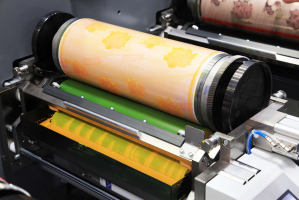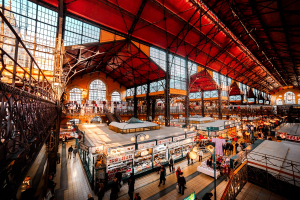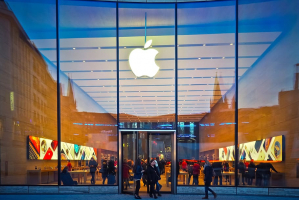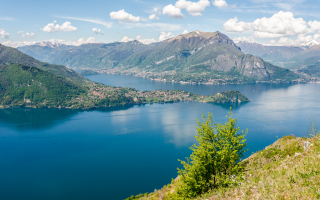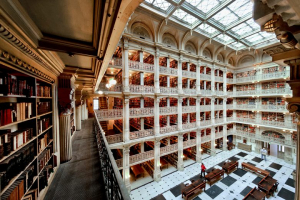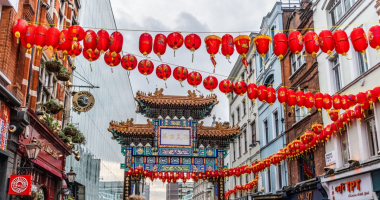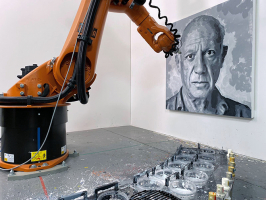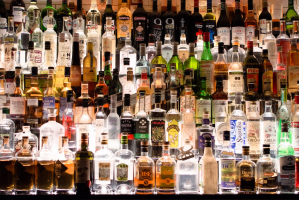Top 12 Largest Metro Systems In The World
One of the most widely used modes of transportation worldwide is the metro. But which countries have the world's largest, fastest, and most stations per square ... read more...mile metro systems? There are numerous sizable metro systems spread over the globe. However, the metro systems of the biggest nations have always piqued our interest. In light of this, we will respond to all of these queries as we examine the top largest metro systems in the world.
-
The New York City Subway is one of the largest metro systems in the world. It is a rapid transit system that is owned by the city of New York and leased to the Metropolitan Transportation Authority(MTA), one of its subsidiary agencies. With 424 stations, it is the largest metro system in the world and is regarded as the eighth-oldest subway. It surpasses the second-place metro system by a wide margin. If we include transfer stations, there are 472 stations total. Of these 472, 470 stations run continuously throughout the year. Another 14 additional stations will be operational, as scheduled.
American inventor Alfred Ely Beach gave the first demonstration of the underground transit system in New York City in 1869. Its construction started in 1900, and in 1904, was opened to the public in New York City. It is the ninth busiest metro system in the world and the sixth-longest metro system in the world with a length of 394 kilometers. 1.6 million people use it annually.
Location: United States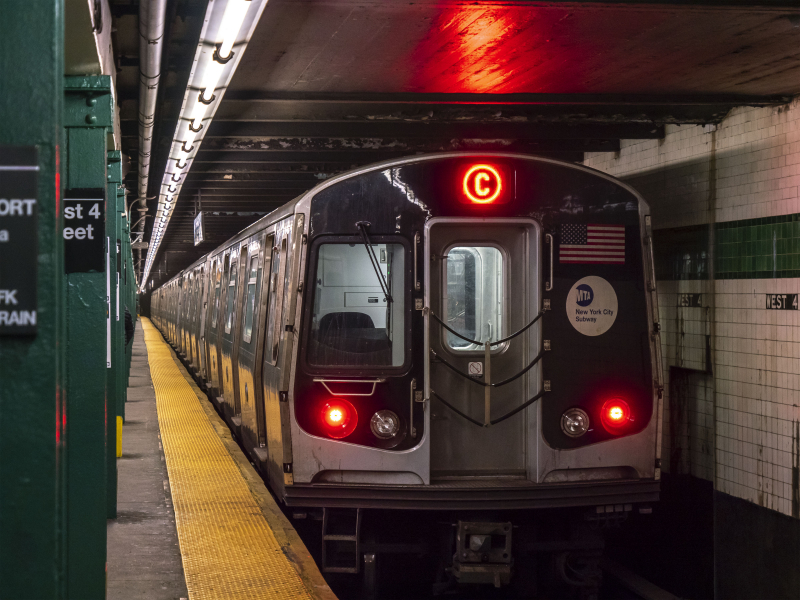
Photo: Wikipedia Photo: Luftschlange -
Unsurprisingly, China, the nation with the greatest population, occupies two spots on our list of the largest metro systems in the world. With 345 stations and a total length of 676 km, the Shanghai Metro, which debuted in 1993, is the second-largest metro in the world. The only difference is that, after the Beijing Subway, it has more than 3.7 billion yearly riders, making it the busiest metro in the world. With more than 10 million daily riders and 13 million performance records, it is equally valuable to the Beijing Subway. As you can see, the Chinese subway systems have a clear advantage in each of the three categories.
After the Beijing Subway and the Tianjin Metro, the Shanghai Metro is the third-oldest rapid transit system in all of mainland China. Since 2003, new lines have frequently started operating. The system length and a few stations experienced the biggest increase between the end of 2007 and 2010, the years leading up to the Expo 2010. It continues to grow swiftly, with its most recent additions having started operations in December 2021. The Shanghai Metro's system length and station count are shown in the table below.
Location: China
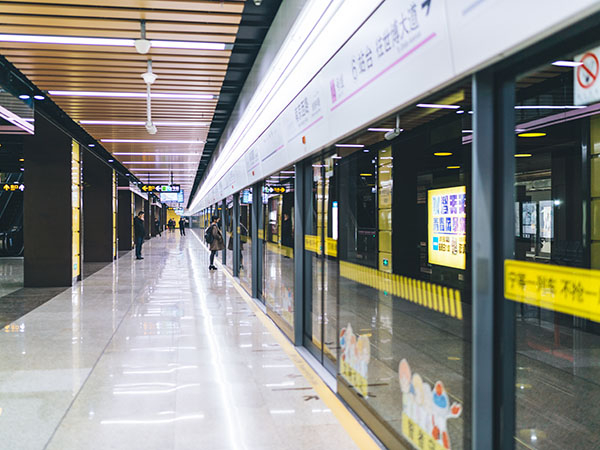
Photo: Top China Travel 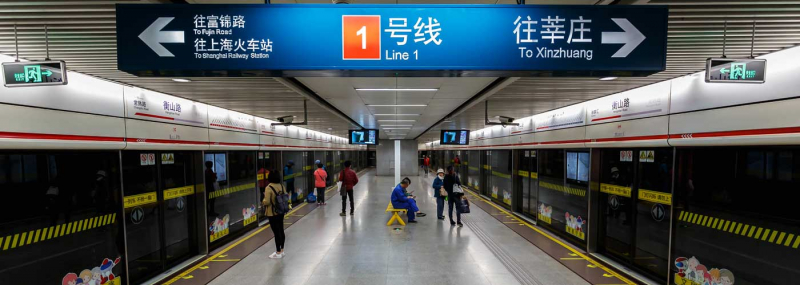
Photo: Shanghai Visitor -
The Beijing Subway is the Beijing Municipality's fast transport system. Even though 394 metro stations are included in several sources, 60 of them are transfer stations, hence this figure is double-counted. The Beijing Subway has 331 stations in total. On October 1 of this year, the subway system-first introduced in 1969-celebrated its 50th birthday. The route's overall length is 678.2 km, however without the Xijiao line, it is only deemed to be 669.4 km.
Beijing Subway is the second-longest metro network in the world as a result. Its daily ridership exceeds 10 million, but on July 12 of this year, it exceeded 13 million, breaking a previous record. With approximately 3.8 billion riders each year, it ranked top among the busiest metros in the world despite its excellent performance. The fact that the capital city, which has a population of nearly 21 million, has this number and is in the top three in each of the three categories, however, does not seem particularly remarkable.
Location: China
Video: Central City - World P 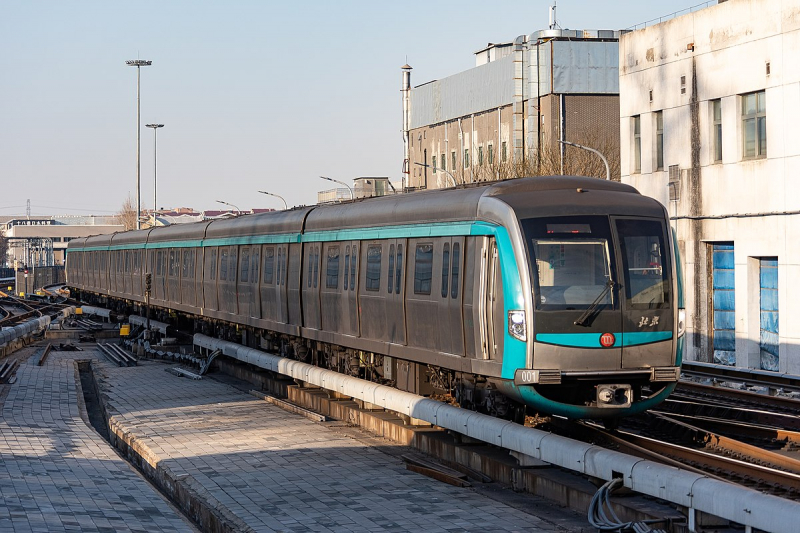
Photo: Wikidata -
Only Asia will be represented on our list of the largest metro systems in the globe in the following locations. There are 315 stations in the 1974-opened Seoul metro system. Its entire journey is 340.4 kilometers long. With more than 1.9 billion riders per year, it is regarded as one of the busiest metros in the world. By 2024, new metro stations and lines are expected to be operational.
The majority of the Seoul Metropolitan Area is served by the system, including Incheon and its satellite cities in Gyeonggi province. Regional lines on the network extend past the Seoul Metropolitan Area to rural areas more than 100 km away in western and northern Gangwon and Chungnam provinces.
Multiple systems come together to build the network to create a bigger, more cohesive system. These include the Incheon Metro lines, run by the Incheon Transit Corporation, that serve Incheon city proper; the Seoul Metro proper, which consists of Seoul Metro lines 1 through 9 and some light rail lines, that serves Seoul city proper and its surroundings; the Korail regional rail lines, that serve the greater metropolitan region and beyond; the Gimpo Goldline and the Yongin Everline that connect corners of their respective cities to the city center.
Location: South Korea
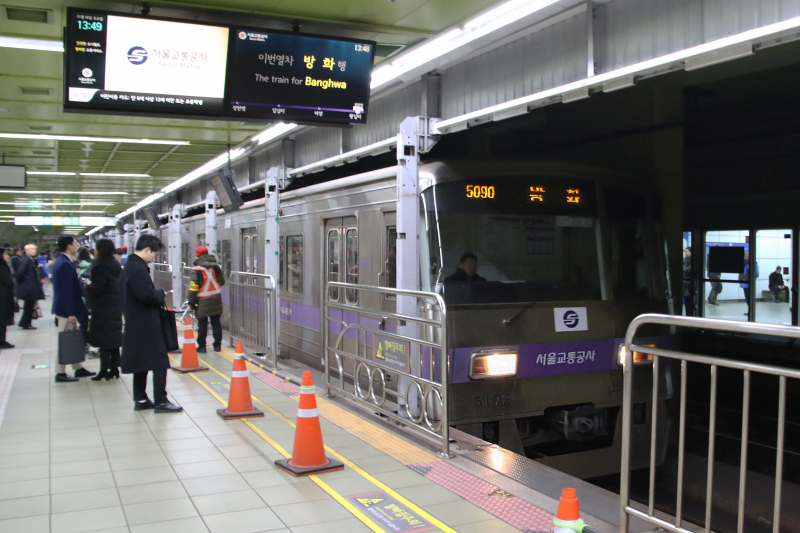
Photo: Wikipedia 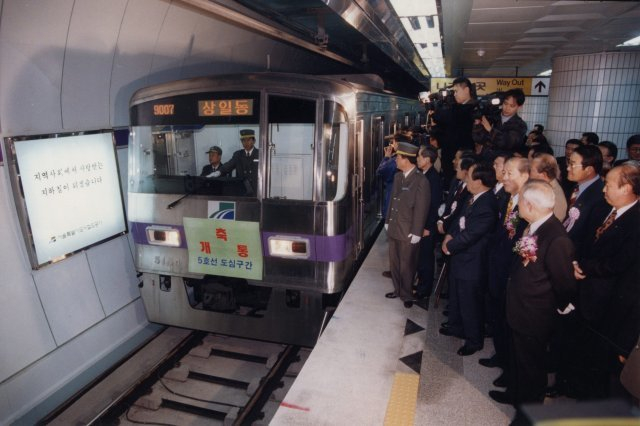
Photo: 동아일보 -
In the French metropolis of Paris, there is a fast transit system called the Paris Metro. It is regarded as a symbol of the city and is distinguished by the capital's geographical borders' compactness, uniformity of architecture, and distinctive entrances with Art Nouveau influences.
Ten years after the London Underground, in 1900, the Paris Metro was established. the same number of stations as the Metro in Madrid at 302. However, since the Montmartre funicular serves as the 303rd "false" station and is a part of the metro system, we can even state that there are 303 stations. Over 4 million people use it every day, and over 1 billion people do it annually.
Without fanfare, the first line began on July 19, 1900, at the World's Fair (Exposition Universelle). The system quickly grew up to World War I, and by the 1920s, the center was finished. Extensions into the suburbs were developed in the 1930s. After World War II, additional trains were introduced to handle the increased traffic, but the network's design, particularly the close proximity of stations, has prevented future advancements.
Location: Paris
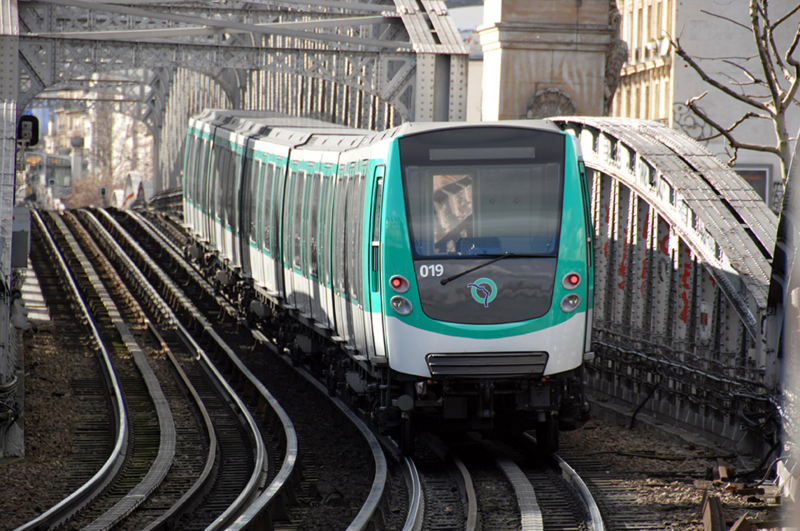
Photo: European Space Agency Video: Central City - World Pu -
Spain's capital city of Madrid is served by the Madrid Metro, a fast transit system. With 302 stations, the Madrid metro system, which celebrated its 100th birthday on October 17, came in sixth on our ranking of the biggest metro systems. There are 293 kilometers in all. It's interesting to note that the metro system in Madrid has more escalators than any other metro system in history. There are 529 elevators and 1705 escalators in all.
Madrid Metro trains run on the left on all lines, in contrast to the rest of Spain's roads and trains, which run on the right, because Madrid's traffic did not switch to the right until 1924, five years after the system's inception.
Every day, from 6:00 am to 1:30 am, trains run; however, in 2020, the weekend schedule will be extended by an additional hour in the morning. Additionally, starting in 2023, the regional administration plans to operate stations continuously throughout these days. During the 2017 World Pride and the 2021 blizzard in Madrid, it was only open for 24 hours each time.
Location: Spain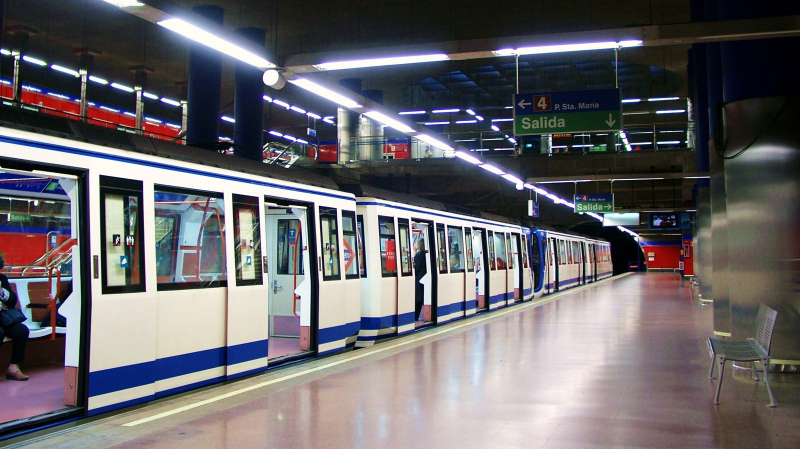
Photo: Wikipedia 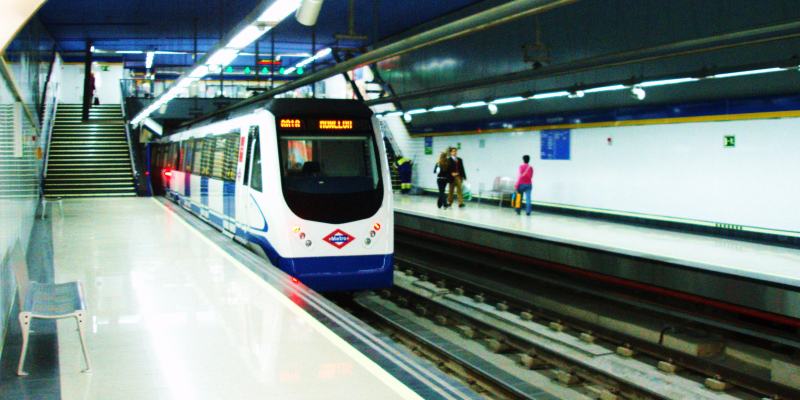
-
Which city has the world's oldest underground rail network? London! The London Underground, which opened in the 1890s, is the world's oldest subway system. Surprisingly, just 45% of the subway system is underground even though it is called the subterranean. With 270 stops, it is the seventh-largest metro system in the world and the fourth-longest overall with a length of 402 kilometers. According to estimates, there are over 5 million riders per day and over 1 billion every year. The Tube is another name for this subterranean, which has been in use for more than 156 years. There are just 33 stations south of the River Thames, and the Underground does not reach the majority of southern Greater London.
The early tube lines, which were formerly owned by various private companies, were consolidated under the Underground brand in the early 20th century. The underground lines and bus services later merged with the surface lines to form London Transport, which was governed by the London Passenger Transport Board (LPTB) in 1933. Transport for London (TfL), the statutory corporation in charge of the London transportation system, owns the current operator, London Underground Limited (LUL).
Location: United Kingdom
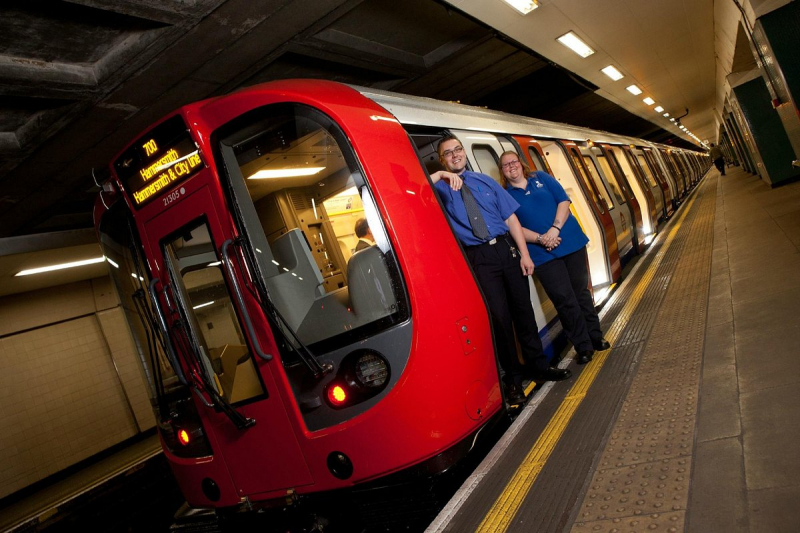
Photo: Tripadvisor 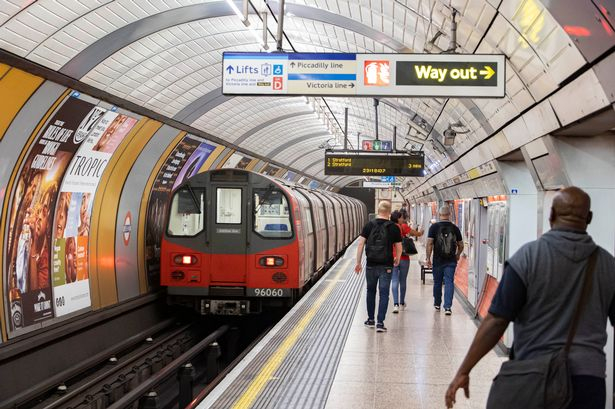
Photo: My London -
The Guangzhou Metro is the city of Guangzhou's rapid transport system in China's Guangdong Province. It was the fourth metro system to be established in mainland China after those of Beijing, Tianjin, and Shanghai and is run by the government-owned Guangzhou Metro Corporation.
Guangzhou began making its first underground rapid transport system construction attempts in 1960. The project was brought up five times in the two decades that followed, but each time it was shelved owing to technical and budgetary issues. The planning for what is now the Guangzhou Metro did not begin until the 1980s, and the first line, Line 1, did not formally commence construction until 1993. Five stations were operational when Line 1 finally opened in 1997, four years later.
Even though it has only been servicing southern China's population for 22 years, Guangzhou Metro is currently rated seventh in the world with 257 stations. With a 478km route length, the third-longest metro system has an average of 8 million daily riders. On June 6 of this year, it peaked with 10.62 million riders per day. Overall, it was identified as the third metro system in 2018 with more than 3 billion riders.Location: China
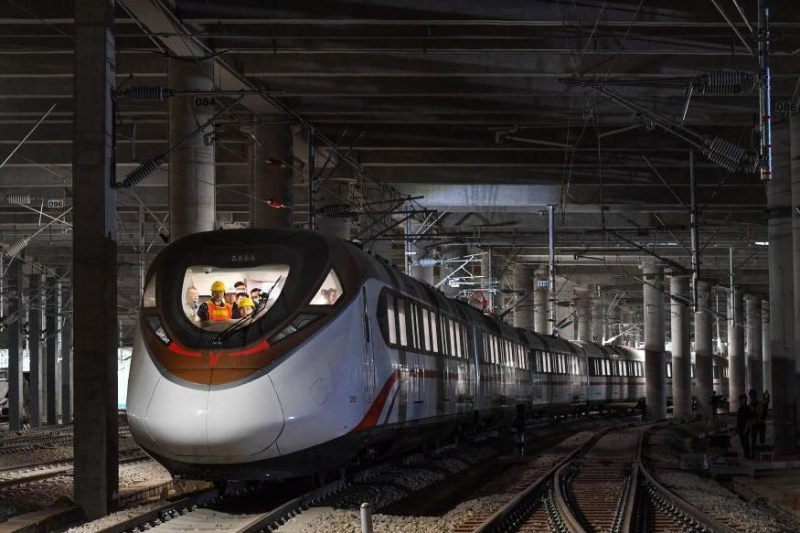
Photo: Railway Gazette 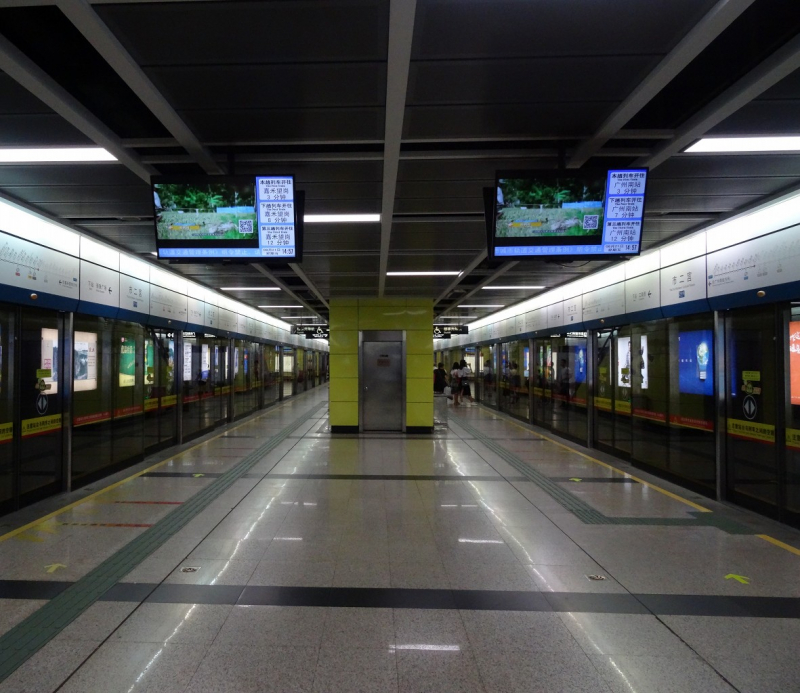
Photo: Wikipedia -
The Moscow Metro has 236 stations, including six on the Moscow Monorail and 31 on the Moscow Central Circle, making it one of the biggest metro systems in the world. With a 397.3 km route length, it is the fifth-longest metro system in the world. If the Moscow Monorail and the Moscow Central Circle are included, the distance is 456 km. The Moscow Metro, which opened in 1935, had over 2 billion annual riders, placing it sixth in the world, according to figures from 2018.
One of the stations, "Park Pobedy," is noteworthy since it is the third-deepest metro station at a depth of 84 meters. The many metro stations in Moscow are stunning examples of Socialist Realist art and architecture. They were created to be "palaces of the people." The metro system is not only a fascinating window into the history of the city but also a quick and inexpensive means to move around the Russian capital.
A must-see item on every trip to the Russian capital is the metro system in Moscow, which is a museum unto itself. Long marble hallways, interesting murals with Soviet themes, and golden sculptures are all incredibly attractive.Location: Russia
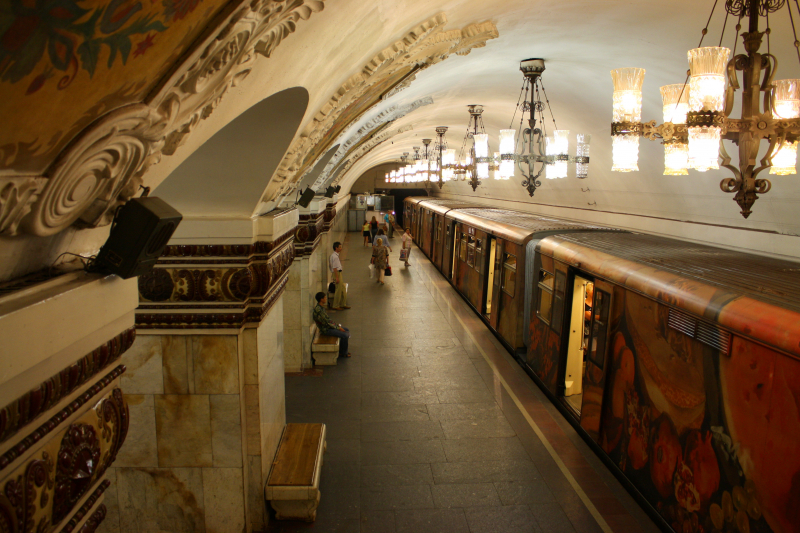
Photo: Wikimedia Commons 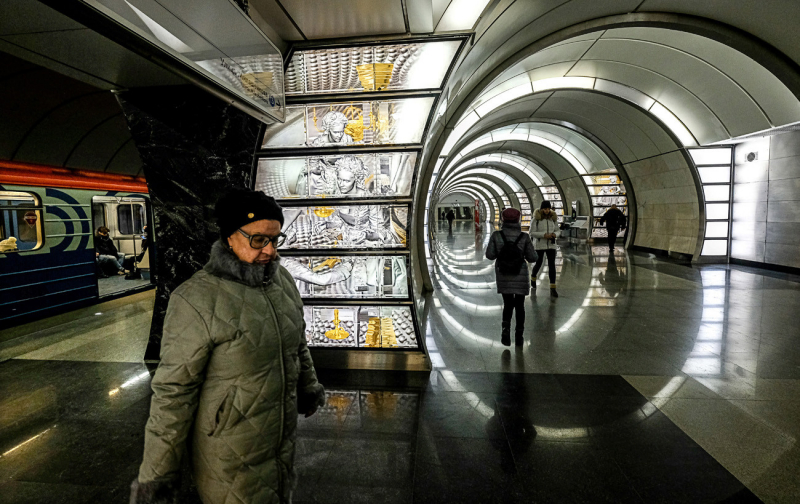
Photo: The Jakarta Post -
In India's National Capital Region, the Delhi Metro is a mass rapid transit (MRT) system that serves the capital city of Delhi as well as its satellite cities of Ghaziabad, Faridabad, Gurgaon, Noida, Bahadurgarh, and Ballabhgarh. Ten colored lines serving 255 stations make up the network. Despite the fact that there are a total of 285 stations, it is important to remember that transfer stations are counted multiple times. There will be 229 stations overall if 24 transfer stations are counted just once. According to figures from 2018, Delhi Metro, the eighth-longest metro system in the world with a total length of 389 kilometers, had more than 900 million yearly riders.
It's interesting to note that the Delhi Metro Railway Corporation received approval from the UN in 2011 to become the first metro system to minimize carbon emissions in the city in order to reduce greenhouse gas emissions. It is not surprising that the nation, which has a population of more than 1 billion, has taken such efforts, considering the high rate of usage of the subway, and has taken drastic measures to protect the environment.
The Rapid Metro Gurgaon (which uses a shared ticketing system) and Noida Metro have interchanges with the Delhi Metro as well. On October 22, 2019, DMRC assumed control of the financially precarious Rapid Metro Gurgaon.
Location: India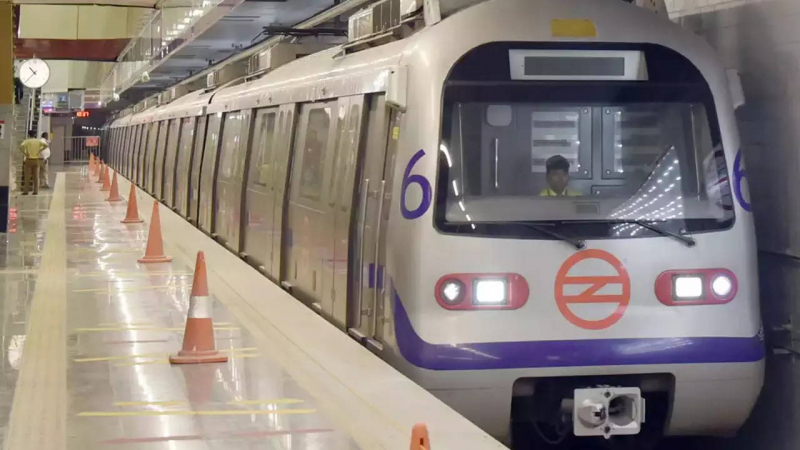
Photo: The Economic Times 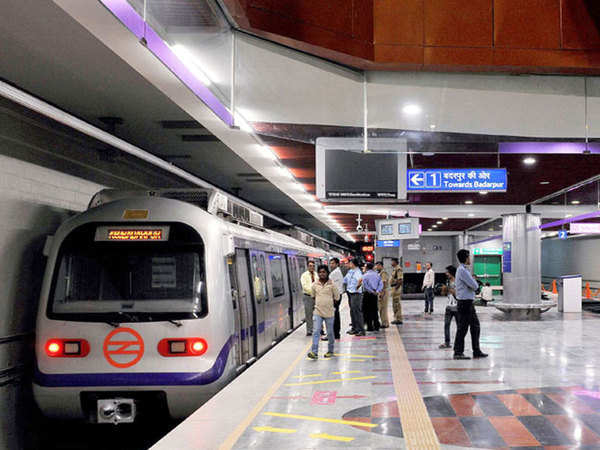
Photo: The Economic Times -
Rapid transit is provided by the Wuhan Metro in the Chinese province of Hubei. The network, which is owned and run by Wuhan Metro Group Co., Ltd., now has 11 lines, 291 stations, and a 460 km (290 mi) total length. Wuhan Metro is the sixth-busiest rapid transit system in mainland China in 2019 with 1.22 billion yearly riders. Several lines or parts are still being built. The residents of Wuhan City were assured by the local authorities that at least two lines or portions will open annually.
After Beijing, Tianjin, Shanghai, Guangzhou, Changchun, and Dalian, Wuhan became the seventh city in mainland China to have a rapid transit system when Line 1, the first line in the system, opened on July 28, 2004. Line 2 is the first subterranean rail line to cross the Yangtze River, and it was inaugurated on December 28, 2012. Since then, the system has rapidly expanded.
The city of Wuhan intended to use the corridor after demolishing the former Beijing-Hankou Railway to build the city's first rapid transit rail line. The Wuhan Municipal Construction Commission established the Wuhan Metro Construction Group in September 1992, and a monitoring group headed by the mayor Qian Yunlu was subsequently established in 1993 to help with the project's financing, planning, logistics, and administration. The city was unable to fund construction for seven years.
Location: China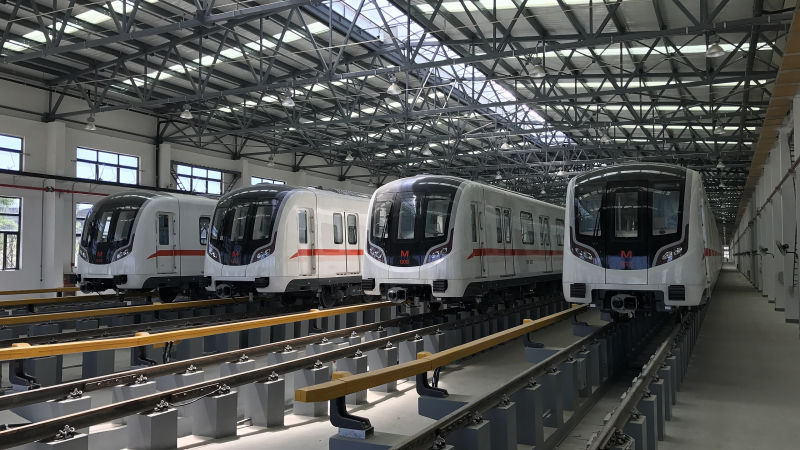
Photo: Wikimedia Commons Video: Righk -
The rapid transport system known as the Mexico City Metro serves the Mexico City metropolitan region, which includes a few communities in Mexico State. It is the second-largest metro system in North America, behind the New York City Subway, and is run by the Sistema de Transporte Colectivo (STC). The system carried 1.655 billion passengers in 2019, ranking eighth in the world for ridership.
The first STC Metro line opened to the public on September 4, 1969, and it was 12.7 kilometers (7.9 mi) long with 16 stations. Since then, the system has grown in a succession of fits and starts. There are 12 lines in the system as of 2015, covering 195 stations across a distance of 226.49 kilometers (140.73 miles). There are ten rubber-tired lines. They employ pneumatic traction instead of conventional steel wheels because it is quieter and runs more smoothly on Mexico City's uneven soils. The 1985 earthquake in Mexico City had little effect on the system.
In the latter half of the 20th century, Mexico City experienced severe problems with its public transportation system due to clogged main thoroughfares and highways, particularly in the downtown area, where 40% of all daily travels in the city were concentrated. This area was served by 65 of the 91 bus and electric transportation lines. The average speed was slower than the walking pace with 4,000 units in addition to 150,000 personal automobile peak hours.
Location: Mexico
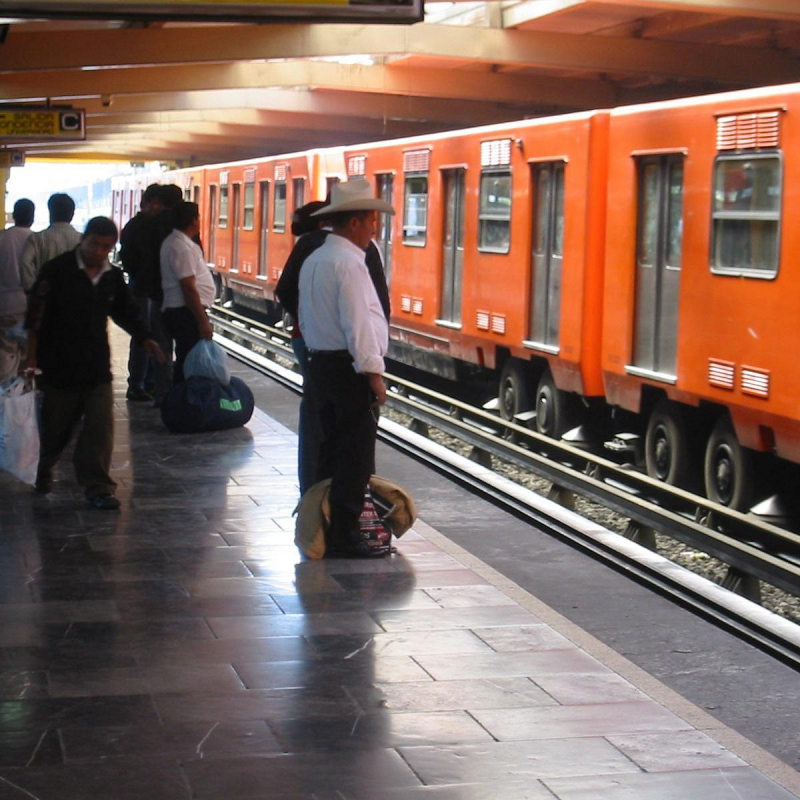
Photo: Tripadvisor 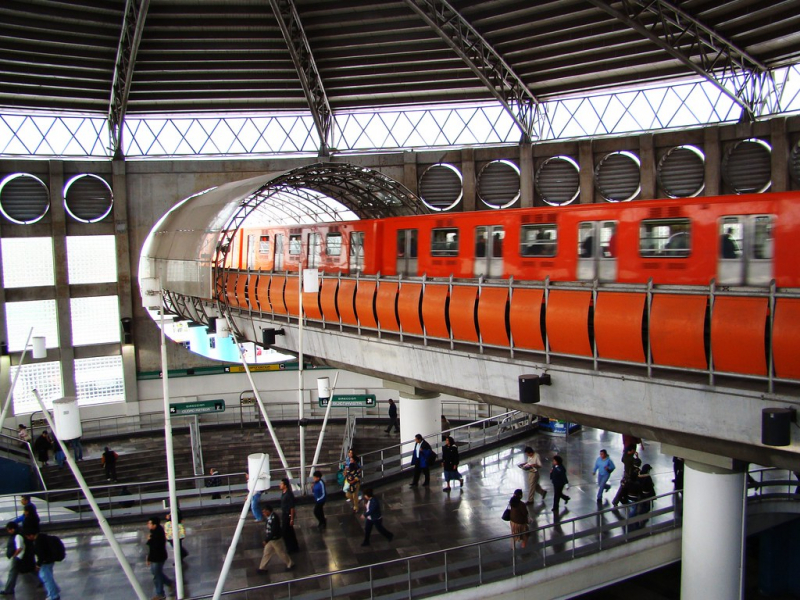
Photo: Flickr

















